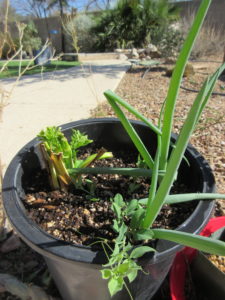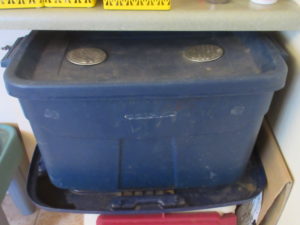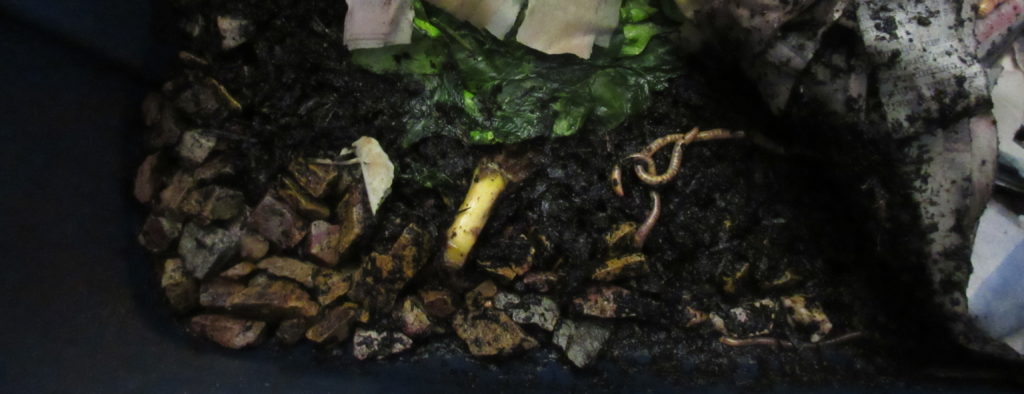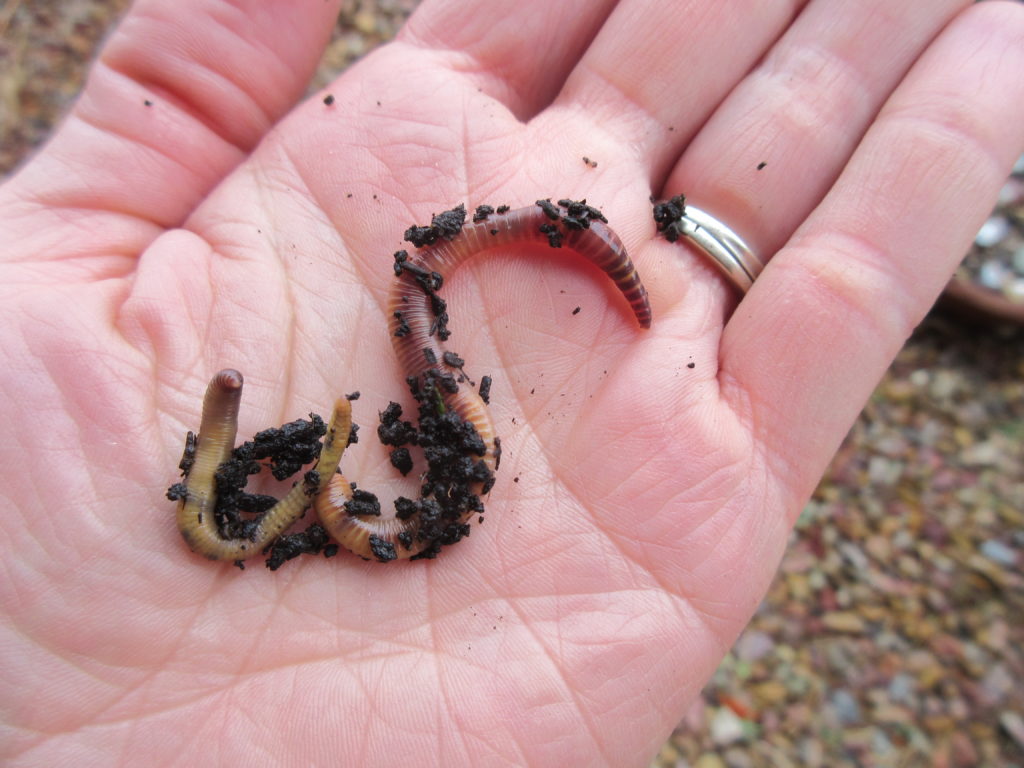Worms help me recycle, garden, teach, and pay attention. I like worms. Worms, though uncommon in desert soil, reside with minimal care in habitats called worm bins. It turns out kids and some of their teachers like worms too. “You are an answer to my prayers,” declared a teacher for whom I had just volunteered to bring worms in for the class’ plant unit. So, one large bin resides in my kitchen, a smaller bin frequents St. Mark’s Early Childhood Center, and I have guided students at Miles Exploratory Learning Center in constructing their own. The worms are “red wigglers,” a broad category sold by pet stores as food and sporting goods stores as bait. I keep worms for a number of reasons.

To feed my plants. Worms make vermicompost, which is literally compost from worms, which they make by recycling food scraps into nutrient-rich poop. Time to top off the soil of a potted plant? I add a handful of vermicompost from my worm bin. Time to encourage the veggies in my veggie garden? I sift out my worms and mix the remaining worm bin contents into the garden rows.
To play in the dirt. The kid in me has always liked to get dirty. There’s simply a satisfaction in poking through moist soil, catching sight of worms and other critters, immersing my hands and imagination in a nearby, other world.
To get kids’ attention. It’s true, some kids do NOT want to get dirty. I use the “yuck” factor to my advantage. Students who stick their hands in the worm bin and students who stand back are equally likely to ask lots of questions. Teachable moments abound.

To compost quickly. Sometimes I’m patient, but it’s nice when I don’t have to be. Usable compost in 2-3 months? Thank you worms and convenient, moisture-holding bin. Outside, my larger compost pile of kitchen and yard waste dries quickly and works on the order of years, not months. I can use my vermicompost more often.
To waste less food. The questionable cantaloupe, the definitely dangerous cucumber… they go to the worms. Plan A is to feed my family lots of fresh produce. Plan B is to buy less if we aren’t going to get to it. Plan C, to feed leftovers from the fridge to the worms, softens the consequences when we mess up.

To connect with my community. The Community Food Bank of Southern Arizona has a beautiful, productive garden. The garden has, among other nifty features, a well-maintained outdoor worm bin. I first learned about vermiculture there as a volunteer. Lessons on plant-feeding, watering, and people-feeding wove together. Paying forward that education is satisfying too.


